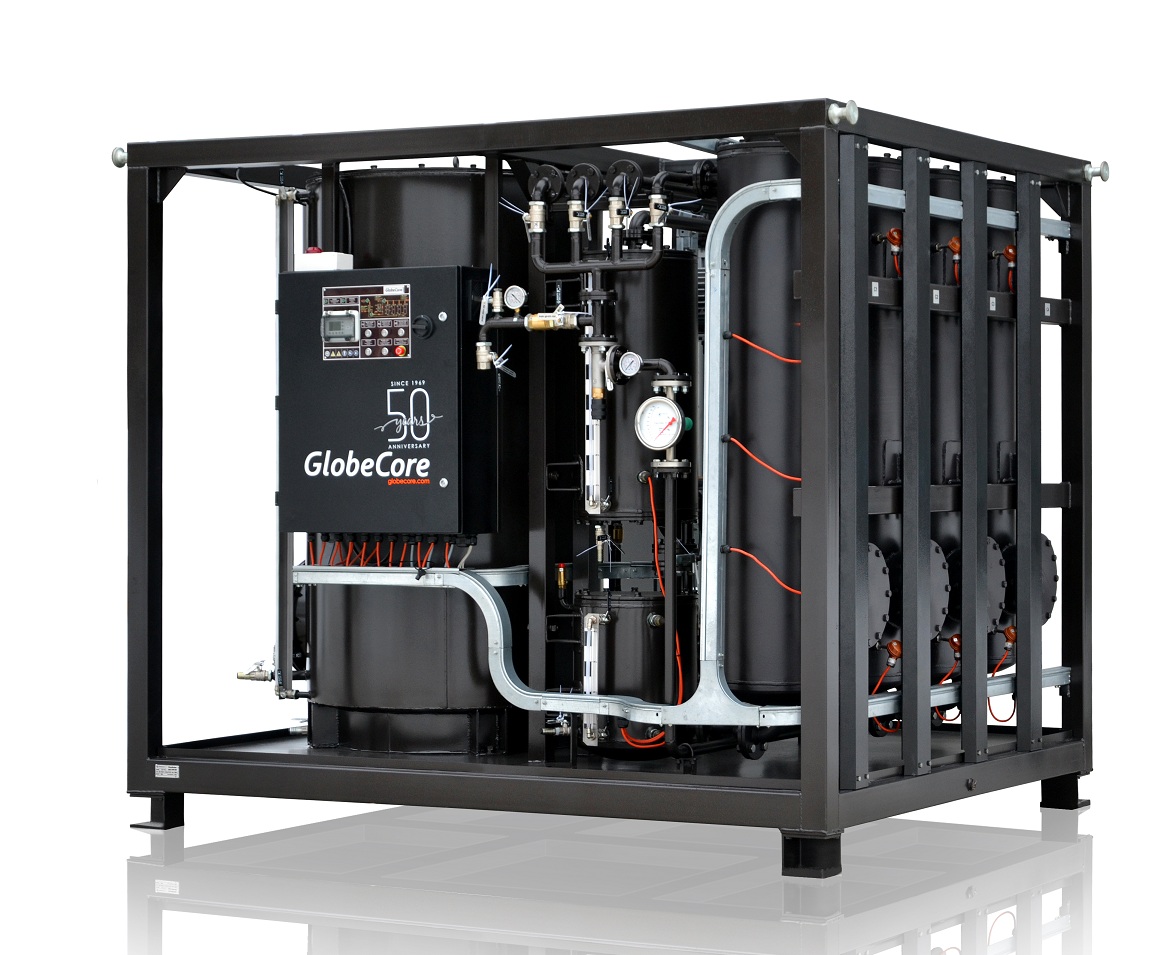How Regenerated Transformer Oil Prolongs Transformer Lifespan
The function of transformer oil is important in making certain the reliability and longevity of transformers, offering as both an insulator and coolant. Regrowed transformer oil offers a compelling solution to enhance these features by efficiently removing harmful contaminations that jeopardize efficiency.
Importance of Transformer Oil
Transformer oil plays an important function in the efficient procedure of electric transformers. It mainly acts as an insulating tool, making certain and avoiding electrical discharges that elements run securely under high voltage conditions. The oil's dielectric buildings are fundamental to keeping the stability of the transformer, as they decrease the risk of failures that could cause disastrous incidents or costly downtimes.
Along with its shielding abilities, transformer oil additionally functions as a coolant. As transformers run, they generate warmth that must be dissipated to avoid overheating and subsequent damages. The oil circulates within the transformer, absorbing and moving warm away from critical components, consequently preserving optimum operating temperatures.
Moreover, transformer oil acts as an obstacle against moisture and pollutants, which can compromise the performance and durability of the transformer. Its chemical properties assist in neutralizing acids and other results that might develop in time, adding to the total health of the electrical system.
Advantages of Regenerated Oil

In addition, regenerated transformer oil has a reduced degree of impurities, including bits and contaminants that can degrade performance. This pureness not only boosts the oil's thermal conductivity yet additionally extends the functional life expectancy of transformers by minimizing overheating threats. The enhanced thermal security of restored oil makes certain regular performance also under high operating temperature levels, which is important for keeping transformer efficiency.
One more advantage is its ecological influence. Regenerated oil advertises sustainability by minimizing waste and the need for new oil manufacturing, consequently lowering the carbon footprint linked with transformer upkeep. Regenerated Transformer Oil. The longevity of restored oil translates to reduced maintenance expenses over time, as less oil modifications and less constant equipment downtime are required.
Process of Oil Regrowth
The regeneration of transformer oil includes an organized procedure developed to restore the oil's original properties and boost its efficiency. This procedure generally begins with the removal of the made use of oil from the transformer, which is after that subjected to different filtration techniques.
The initial action in the regrowth procedure is the filtration, where solid impurities such as steel, dirt, and sludge fragments are removed. This is commonly complied with by vacuum purification, which helps to get rid of moisture and unstable compounds, consequently boosting the oil's dielectric toughness.

Effect On Transformer Efficiency
Restoring the buildings of regenerated transformer oil substantially influences the total efficiency of transformers. Enhanced dielectric strength is one of one of the most essential advantages, as it enables much better insulation and reduces the probability of electric break down. This renovation leads to a more secure procedure under high voltage problems, ultimately leading to increased efficiency.
Additionally, the elimination of contaminants and deterioration items during the regeneration process reduces the threat of getting too hot. Cleanser oil facilitates far better warmth dissipation, which is essential for preserving optimum operating temperature levels. Therefore, the thermal efficiency of the transformer is boosted, enabling higher loads without compromising dependability.
Furthermore, the chemical security of regrowed oil guarantees long term operational life. It resists oxidation and degradation, lowering the regularity of upkeep interventions and oil substitute. This security not only adds to enhanced efficiency however likewise aligns with sustainability objectives by lessening waste.
Future of Transformer Maintenance
As advancements in modern technology continue to reshape the landscape of electric design, the future of transformer upkeep is positioned for significant makeover. The combination of wise technologies, such as IoT sensing units and predictive analytics, enables real-time surveillance of transformer wellness, boosting the capacity to preemptively deal with problems prior to they intensify into significant failings. This aggressive strategy not only makes the most of operational efficiency but additionally extends the life-span of transformers.
Moreover, the application of expert system (AI) in data analysis permits for even more precise fault discovery and diagnosis. By leveraging machine discovering formulas, upkeep groups can recognize patterns in functional information that human experts might forget, bring about more enlightened decision-making.
In addition, the fostering of green practices, including the use of regenerated transformer oil, is set to redefine upkeep protocols. This lasting technique not just minimizes environmental influence yet additionally enhances the general health and wellness of the transformer.
Lastly, the change towards automation in this post upkeep processes is expected to streamline procedures, reduce downtime, and lower expenses. As these advancements remain to evolve, the future of transformer upkeep will certainly come to be a lot more reliable, trustworthy, and sustainable, making certain the honesty of crucial electric framework.
Conclusion
The utilization of regenerated transformer oil significantly improves the functional durability of transformers. By properly recovering dielectric strength and thermal stability, this oil plays a critical function in mitigating dangers linked with getting too hot and oxidation. The regeneration procedure not just gets rid of unsafe pollutants however additionally lowers upkeep frequency and oil substitute prices. Inevitably, the link adoption of restored oil stands for a pivotal improvement in transformer upkeep, ensuring optimum efficiency and sustainability in the monitoring of electrical framework.
The function of transformer oil is crucial in making sure the dependability and long life of transformers, serving as both an insulator and coolant.Transformer oil plays a crucial duty in the efficient operation of electrical transformers. Restored oil advertises sustainability by minimizing waste and the requirement for new oil production, thus decreasing the carbon impact connected with transformer maintenance.Recovering the buildings of regenerated transformer oil substantially affects the total performance of transformers.The utilization of regenerated transformer oil dramatically improves the functional longevity of transformers.